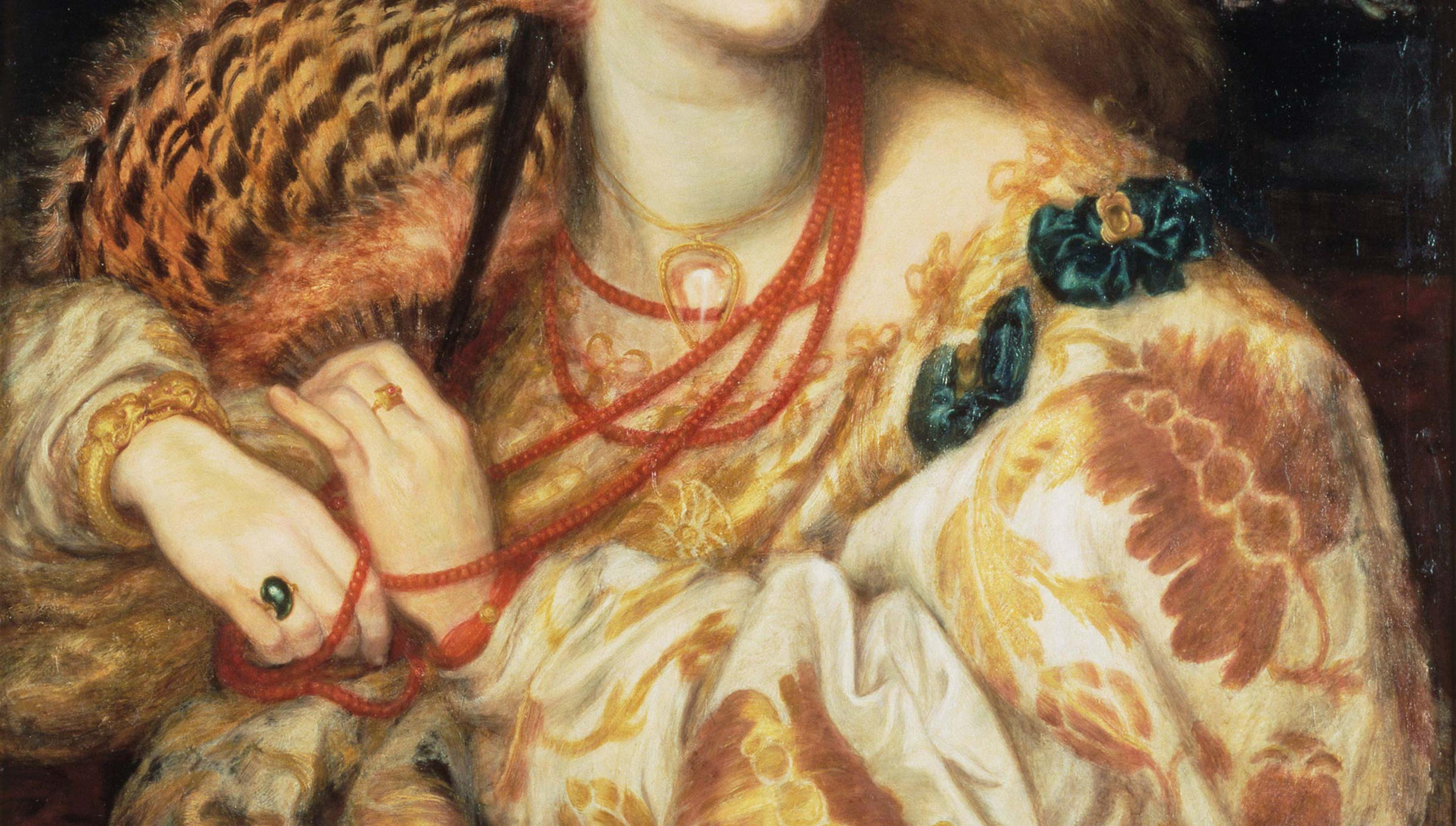The orange-red coral we know and love is Corallium rubrum, which grows deep in the waters of the Mediterranean. The ancient Greeks incorporated it into a myth: after petrifying Cetus, the sea monster threatening Andromeda, Perseus placed Medusa's head on the riverbank while he washed his hands. When he recovered her head, he saw that her blood had turned the seaweed and reeds into red coral.
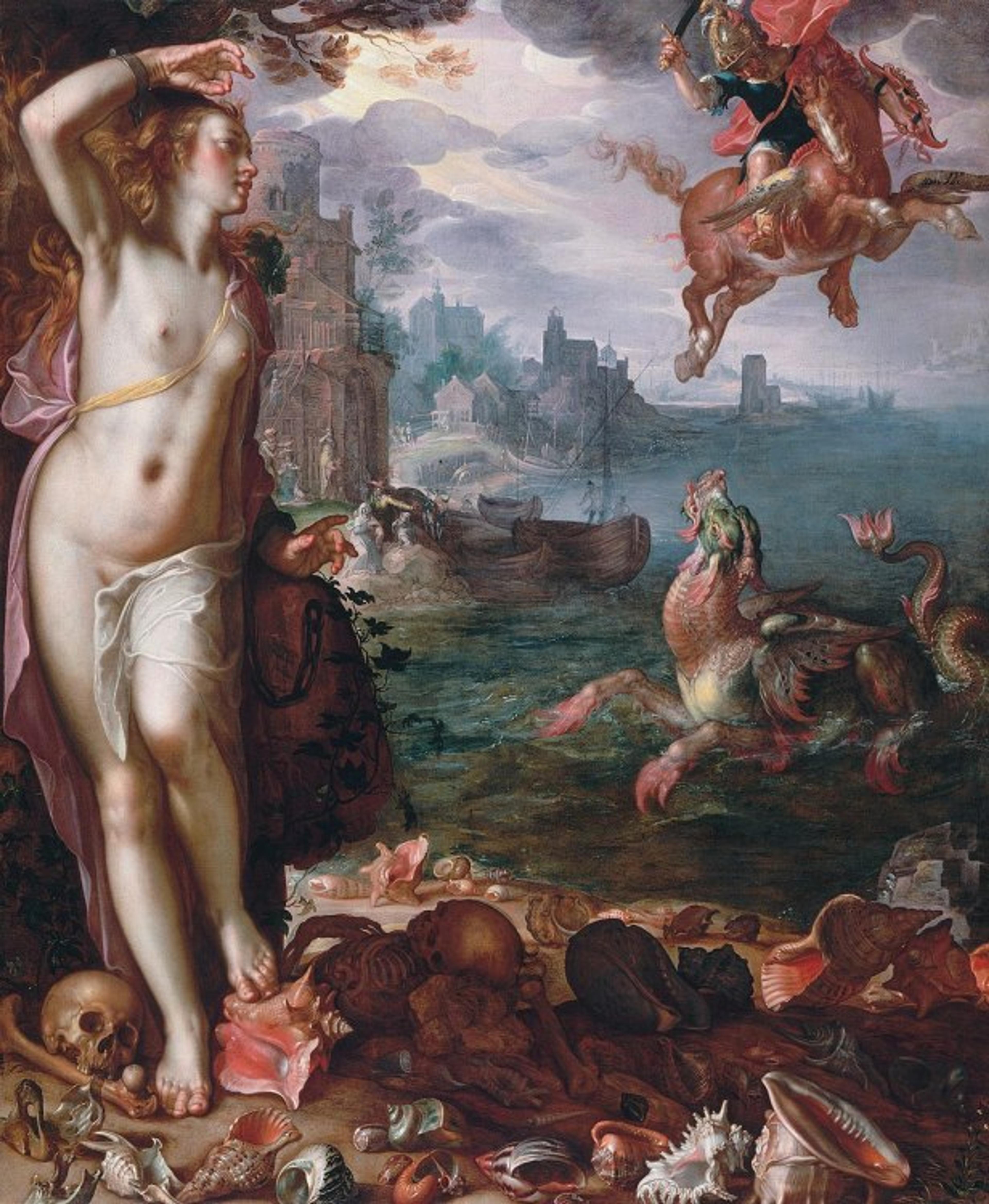
Perseus and Andromeda by Joachim Wtewae, 1611.
Coral in jewelry in Europe dates to at least ancient Rome, when it��was believed that wearing branches of coral warded off the evil eye and cured sterility. Pliny the Elder is said to have recommended coral to protect against lightning strikes and temptresses.

Madonna and Child and Angels by Allegretto Nuzi, 1360.
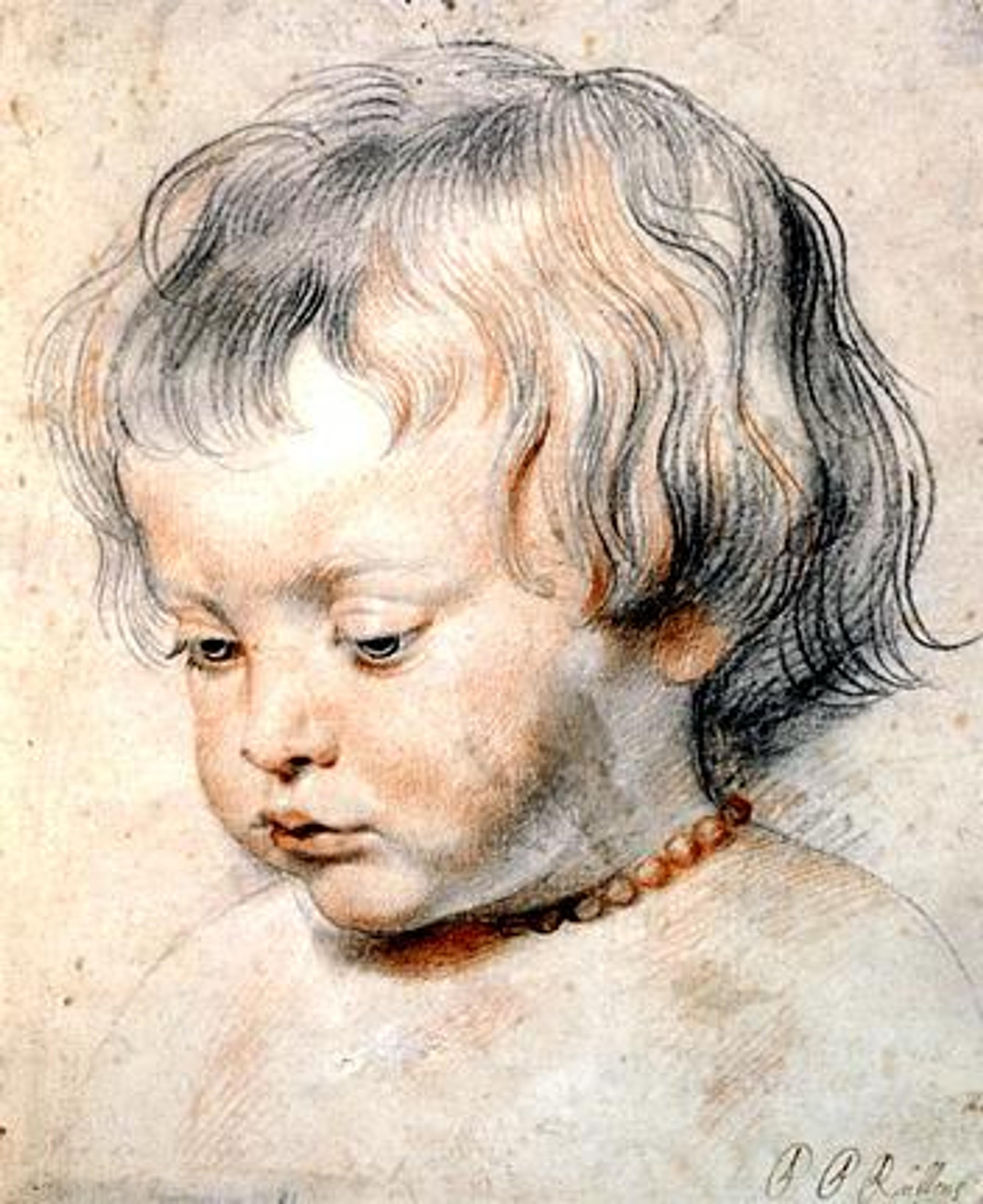
Nicolaas Rubens Wearing a Coral Necklace by Peter Paul Rubens, c. 1619.
Another use of coral: protecting children. Children were gifted branches and strands of coral beads to wear as a form of mystical protection against evil. Once the child grew up and their strand of beads became too short, they might double the strand and wear it as a bracelet.
Most of the antique coral jewelry in our collection was made and marketed to English people to purchase as souvenirs on “The Grand Tour.” This was an essential undertaking for any English man of the nobility beginning in the 1700s. Remember, during the 18th century, museums weren’t yet a thing in England, so people had to travel abroad to see art and sculpture and absorb European culture. Most travelers went to France to rub elbows with the high society and study French, dancing, riding and fencing. Then possibly a quick jaunt to Germany and Switzerland before the culmination of the trip in Italy. This is where they really got down to business: Florence had the Uffizi gallery, where all the Renaissance paintings and Roman sculpture could be seen in one place. Rome was the place to study the ancient ruins, along with Medieval, Renaissance, and Baroque art and architecture. In Naples, you could see the newly discovered archaeological sites of Herculaneum and Pompeii. And finally, on to Venice, the place to “sow one’s oats.”

British Gentlemen (most likely hung over) in Rome by Katharine Read, c.1750
While the goal of the tour in the 1700s was to acquire knowledge and generally become a more well-rounded person of privilege, we have to remember that men usually had just “come of age,” or turned 21. On the Grand Tour, they got to leave their homes for the first time and behave badly. Throughout the trip but particularly in Venice, drinking, gambling, brothels, and lowbrow theatre were part of the rites of passage. Famously, Lord Byron reported (to his mother via letter!) that he was sleeping with his Venetian landlord’s wife on his trip, even though he was married at the time, too. Venice was an essential and much-anticipated destination, obviously.
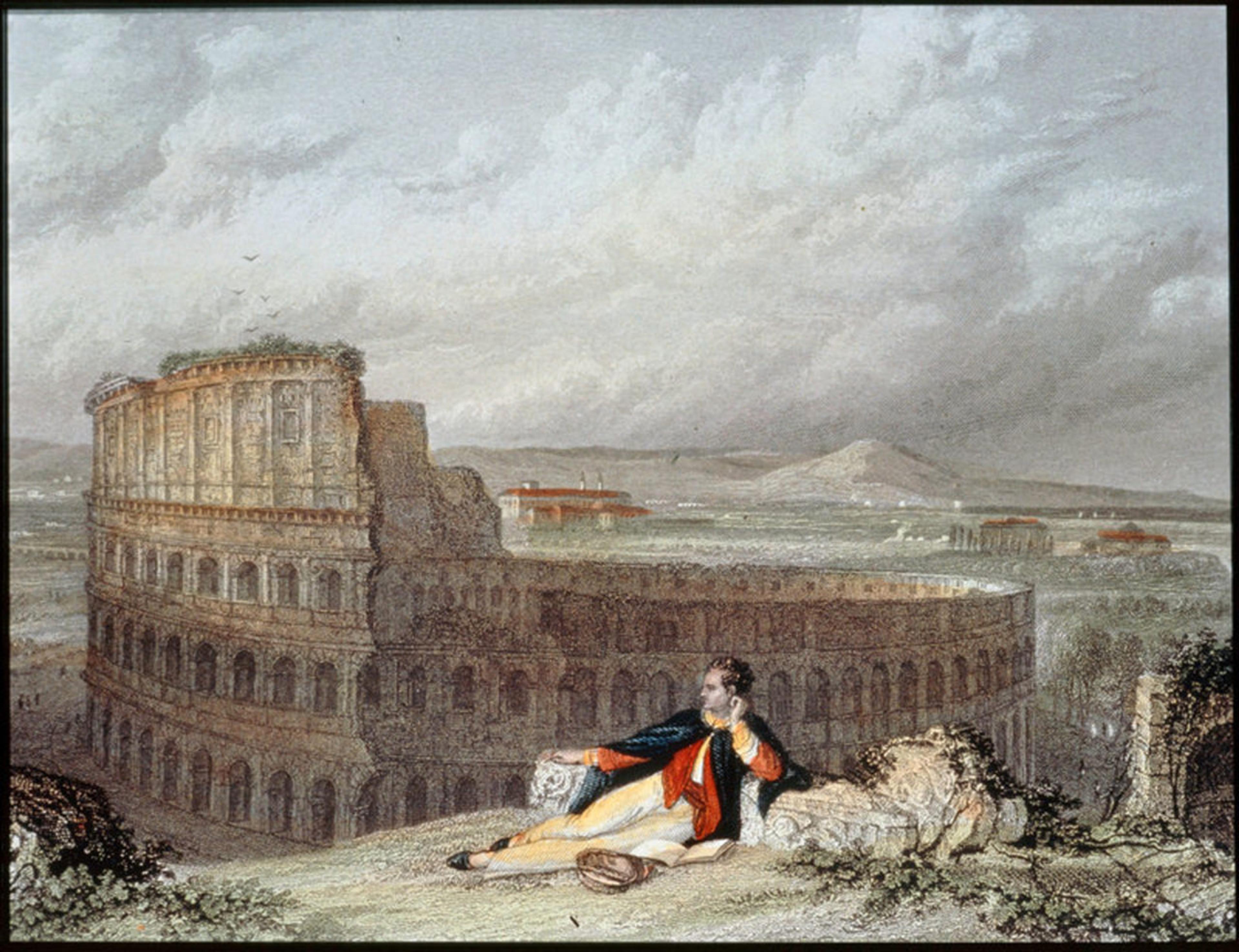
“Lord George Byron contemplating the Colosseum in Rome” (after boning his landlord's...
Young men who had been to Italy on the Grand Tour developed a taste for macaroni, a type of pasta little known in England then. Once they got back home, they’d call anything that was fashionable or à la mode “very macaroni.” Think about how a college student acts when they’ve come back from their college year abroad — bragging about how the coffee is so much better in Europe, and sprinkling French words into their everyday vocabulary. Pretentious! Eventually, a song would be written about an American that put a feather in his cap and called it “macaroni” — as if gauche Americans could ever understand the Grand Tour or Continental fashion.
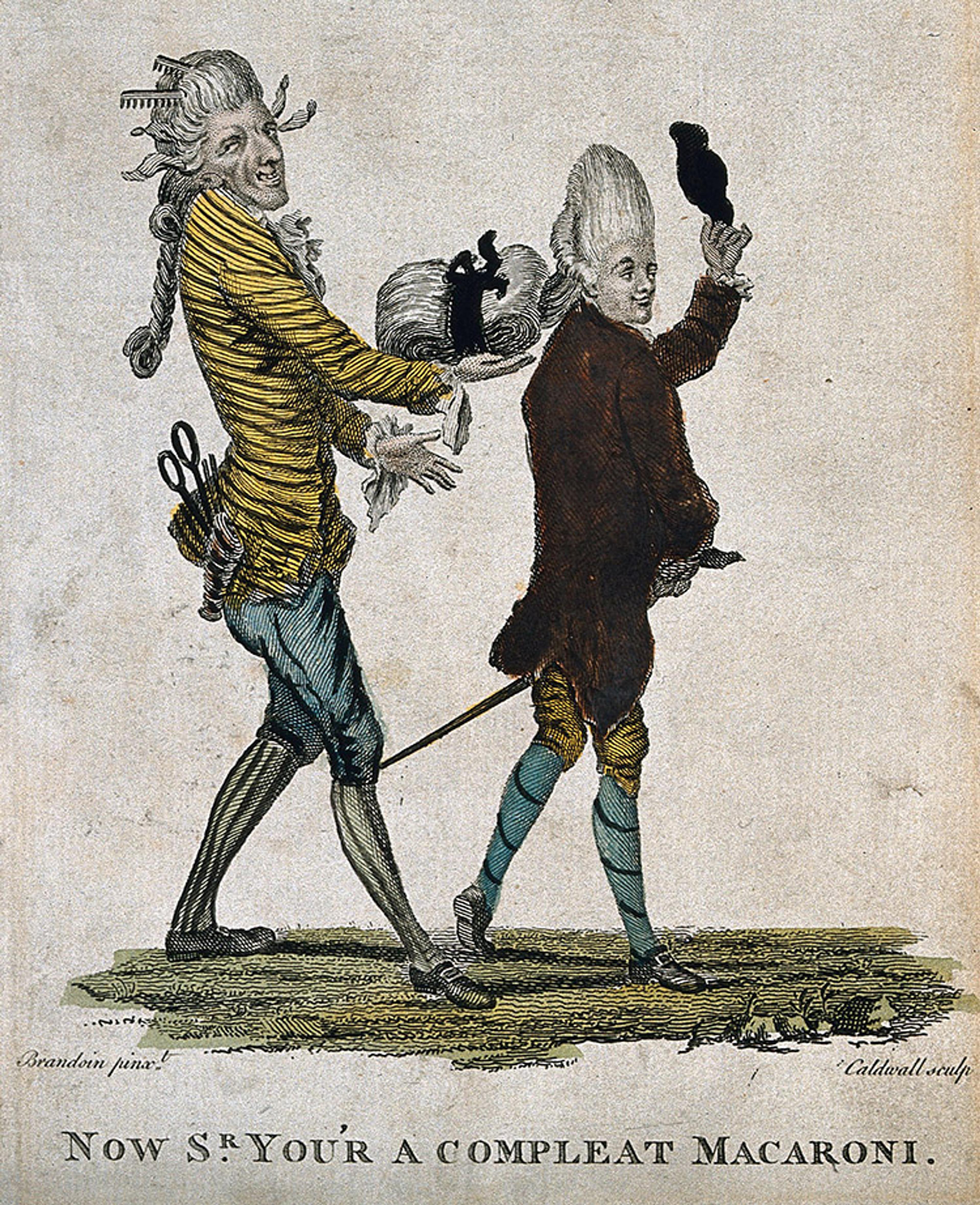
‘Now Sr. you'r a compleat Macaroni,’ coloured engraving by J. Caldwell after...

A macaroni dressing room, colored etching by I.W., 26 June 1772.
The Grand Tour offered the opportunity to acquire things otherwise unavailable, lending an air of accomplishment and prestige to the traveller. Grand Tourists would return with crates full of books, works of art, scientific instruments, and cultural artifacts to be displayed in libraries, gardens, and galleries built for that purpose. Unfortunately, many of these objects were grave goods and other sacred objects that shouldn't have been removed from their sites. Whether sold off by opportunistic locals or just plain taken with impunity, many priceless ancient artifacts made their way to rich private citizen’s homes during the Grand Tour. In the late 20th and 21st centuries, some of these antiquities are finally being repatriated to their home countries.
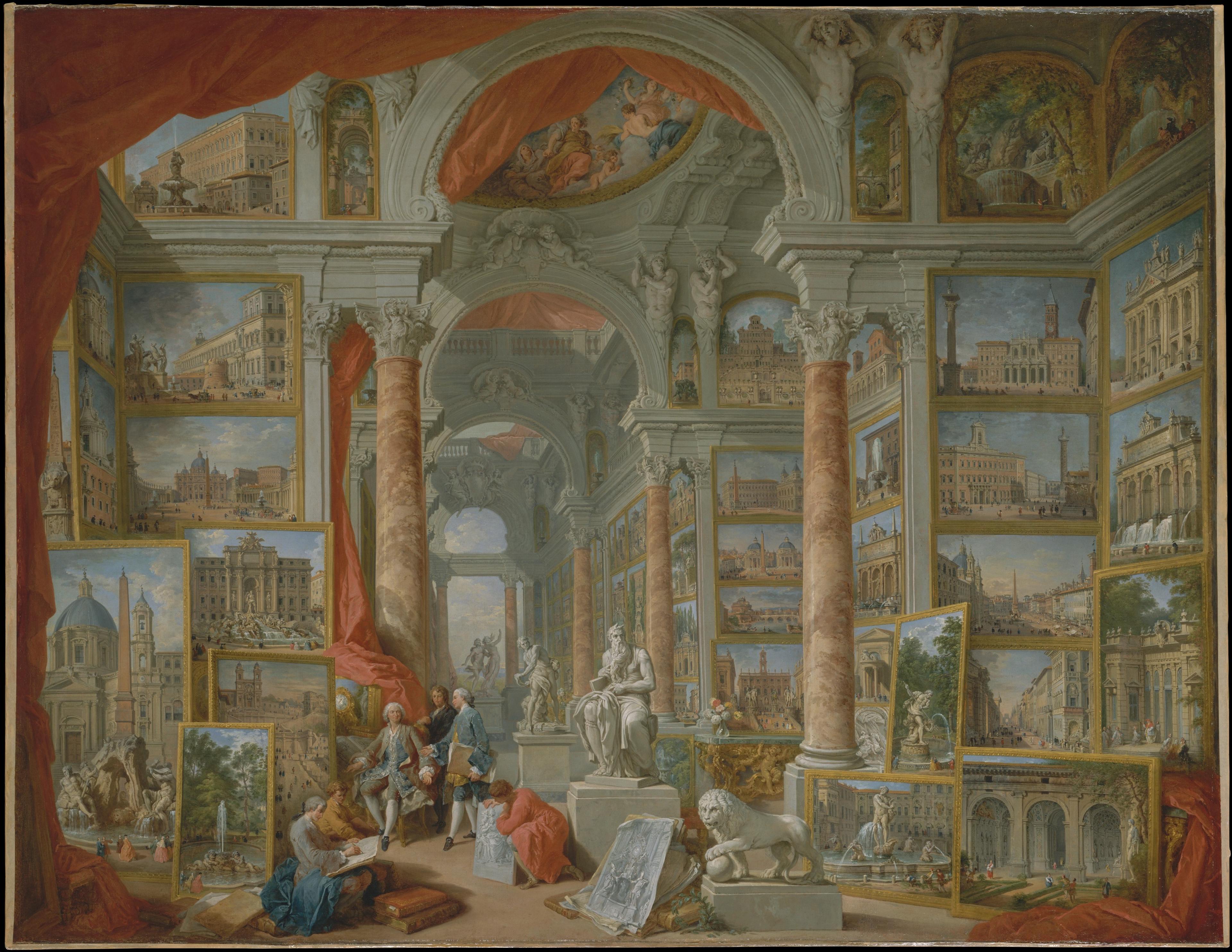
Modern Rome by Giovanni Paolo Panini, 1757.
During the 1800s, coral jewelry became a trendy souvenir among the English Grand Tourists visiting Italy.
Coral was just as abundant in Italy as it had been centuries before, and could easily be harvested in the nearby Mediterranean Sea. Local jewelers who already specialized in coral-carving cashed in on the trend, selling antiquity-themed jewels to rich tourists. They combined it with other place-specific Italian materials, like lava from nearby Mount Vesuvius. Both materials could be carved into cameos, which had been popular in jewelry during the ancient Roman period. As Grand Tourists were in Italy to study the classical ruins and culture, cameos (both ancient and reproduction) were a favorite collectible item. You can still buy Neoclassical-style coral pendants at jewelry shops crammed all along the Ponte Vecchio, the famous medieval bridge in Florence. I did it myself a few years ago on a family trip.

Tourists (like me!) shopping for souvenirs on the Ponte Vecchio, Florence, 2019.
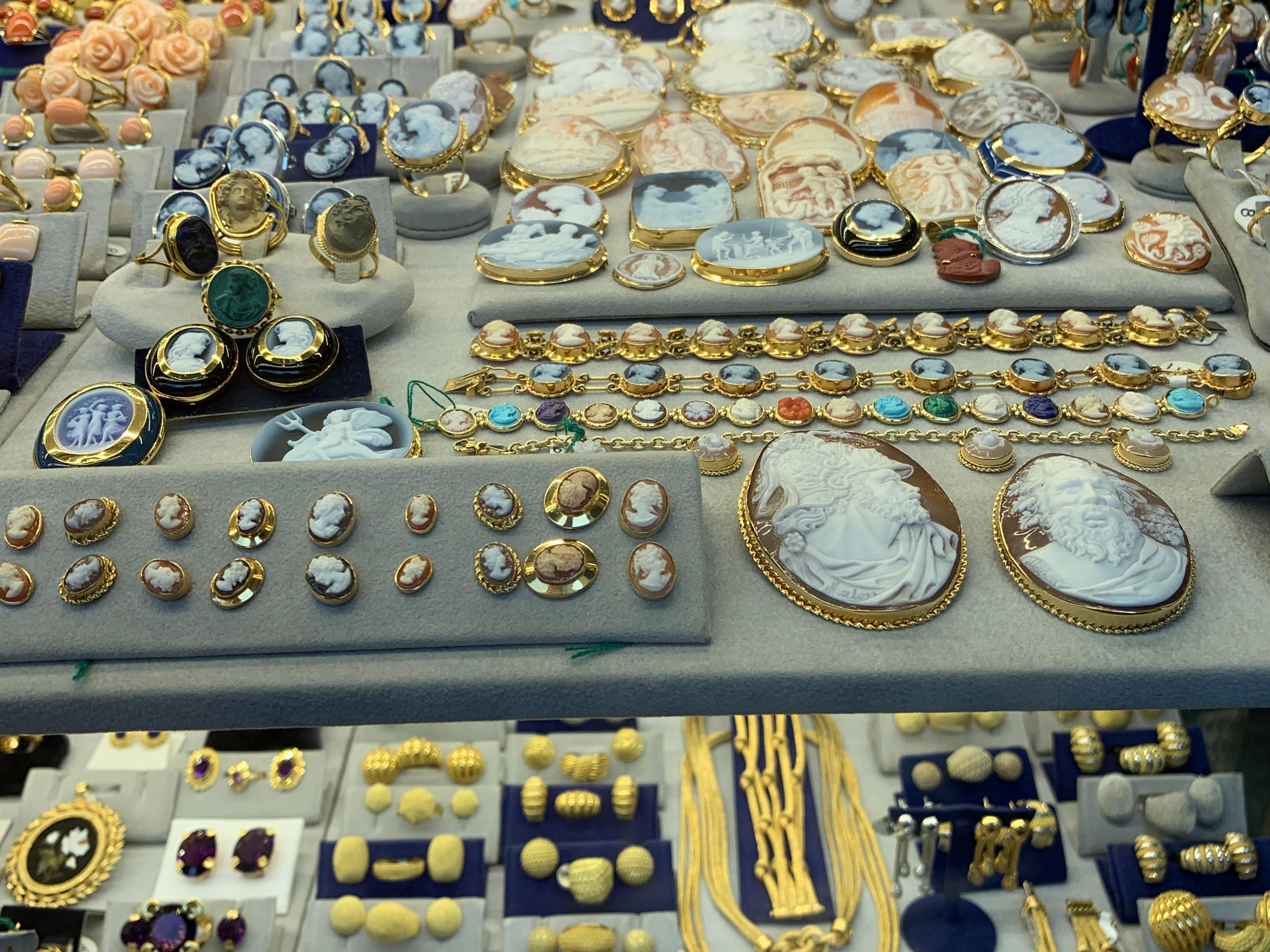
A jeweler’s shop window on the Ponte Vecchio, including coral cameos.
After the advent of steam-powered transportation around 1825, the Grand Tour remained popular, but suddenly it wasn’t reserved exclusively for the extremely rich anymore. Anyone with any money could travel, including women. It became part of upper-class women’s education to study in Italy, usually with a spinster relative as a chaperone; E. M. Forster’s novel A Room with a View is a romance about just this. And notably, in Greta Gerwig’s 2020 adaptation of Little Women, Amy falls in love with Laurie while she’s studying painting in Paris. (We highly recommend both of these movies!)

Helena Bonham Carter in Merchant Ivory’s 1985 movie “A Room with a...
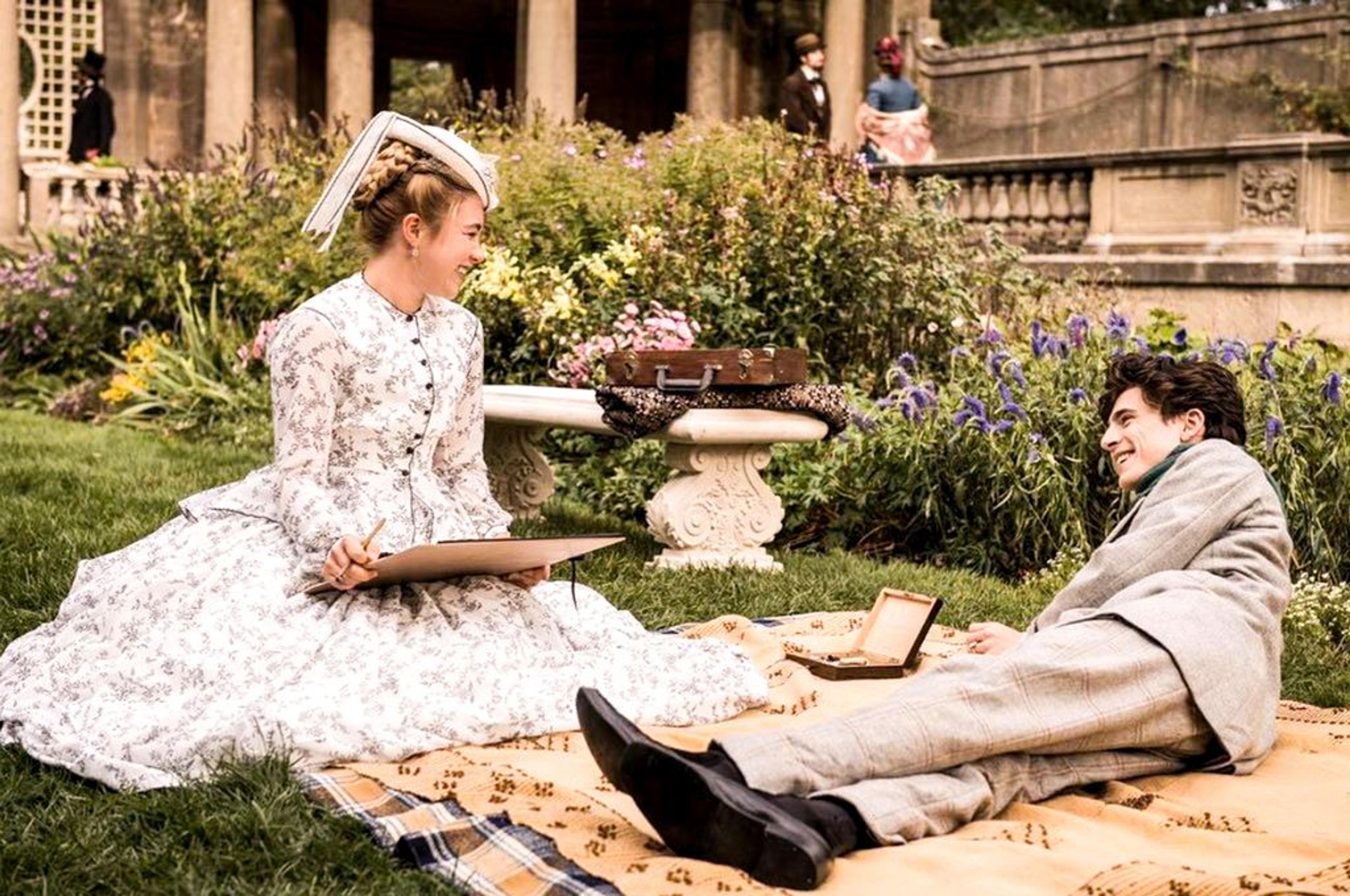
Florence Pugh and Timothee Chalamet in the 2020 version of "Little Women".
